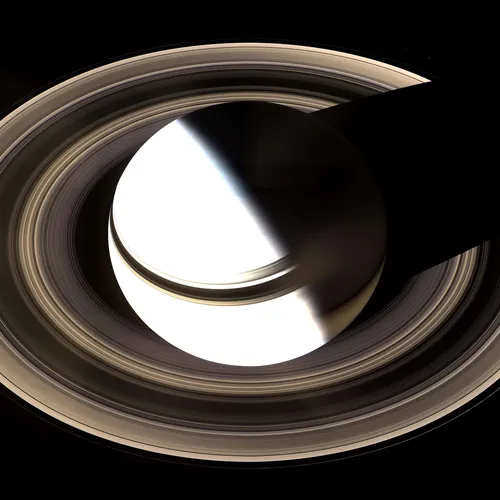
Silicon Valley Astronomy Lectures
Listen to exciting, non-technical talks on some of the most interesting developments in astronomy and space science. Founded in 1999, the Silicon Valley Astronomy Lectures are presented on six Wednesday evenings during each school year at Foothill College, in the heart of California's Silicon Valley. Speakers include a wide range of noted scientists, explaining astronomical developments in everyday language. The series is organized and moderated by Foothill's astronomy instructor emeritus Andrew Fraknoi and jointly sponsored by the Foothill College Physical Science, Math, and Engineering Division, the SETI Institute, the Astronomical Society of the Pacific, and the University of California Observatories (including the Lick Observatory.)
- Update frequency
- every 23 days
- Average duration
- 77 minutes
- Episodes
- 54
- Years Active
- 2021 - 2025

Meet the Neighbors: Exploring Planets Orbiting Nearby Stars (with Dr. Courtney Dressing)
The NASA Kepler mission revealed that our Galaxy is teeming with planetary systems and that Earth-sized planets are common. However, most of the planets detected by Kepler orbit stars too faint to p…

The Biggest Sky Survey Ever Undertaken: Exploring the Universe with the Rubin Observatory (with Dr. Phil Marshall)
The Vera Rubin Observatory will house a survey telescope that will image the night sky faster and deeper than ever before. Its camera, at 3.6 Gigapixels, will be the biggest digital camera ever built…

Postcards from Mars: The Latest from Our Robot Explorers (with Dr. Jim Bell)
Prof. Jim Bell (of Arizona State University), who is a key leader in projects to take images with NASA's rovers on Mars, discusses the history and current state of our exploration of the red planet. …

The Last Stargazers: Behind the Scenes in Astronomy (with Dr. Emily Levesque)
A bird that mimicked a black hole. The astronomer that discovered microwave ovens. A telescope that got shot. The science of astronomy is filled with true stories (and tall tales) of the adventures a…

Will the 21st Century be the Time we Discover Life Beyond Earth (with Dr. Jill Tarter)
Craig Venter & Daniel Cohen suggested that if the 20th century was the century of physics, the 21st century will be the century of biology on our planet. Jill Tarter believes that their idea will be…

The Monster Black Hole at the Center of the Milky Way (with Nobel Laureate Andrea Ghez)
By measuring the rapid orbits of the stars near the center of our galaxy, Dr. Andrea Ghez of UCLA and her colleagues have moved the case for a supermassive black hole at the heart of our Milky Way Ga…

Encounter with Ultima Thule: The Most Distant Object Humanity Has Ever Explored (with Dr. Jeff Moore)
After encountering Pluto, the New Horizons spacecraft, for the first time flew by a member of the Kuiper Belt of icy objects beyond Neptune. This particular object, informally named “Ultimate Thule”…

What Does a Black Hole Look Like: How We Got our First Picture (With Prof. Eliot Quataert)
Black holes are one of the most remarkable predictions of Einstein's theory of gravity: so much material is compressed into such a small volume that nothing, not even light, can escape. In Spring 20…

A Little Talk about Aliens with Dr. Adam Frank
Dr. Adam Frank (U of Rochester) first discusses the history of our search for extra-terrestrial intelligence (SETI), including the Drake Equation, the Fermi Paradox, and the searches for radio messag…

Planet 9 from Outer Space with Dr. Michael Brown
Dr. Brown (whose discovery of dwarf planet Eris led to the reclassification of Pluto) discusses the history of planetary discovery (and demotion), why we think a new, larger Planet 9 is on the verge …

Black Hole Survival Guide with Dr. Janna Levin
May 22, 2021, Dr. Janna Levin (Columbia University's Barnard College)
Dr. Levin helps us to understand, and to find delight in, black holes – perhaps the most opaque theoretical construct ever imagin…

Lick Observatory During Pandemics: 1918 and 2020 (with Dr. Elinor Gates)
Lick Observatory, the first continuously inhabited mountain-top observatory in the world, has been doing ground-breaking research since its opening in 1888. 30 years after Lick Observatory establish…

The Hunt for Dark Matter in the Universe with Dr. Tom Shutt
Astronomers today understand that the universe is full of a mysterious substance they call “dark matter” (because it doesn’t give off any light or other radiation we can detect.) Dr. Tom Shutt (of t…

How a Smooth Early Universe Grew into Everyone You Know (with Nobel Laureate John Mather)
Nobel Physics Prize laureate, Dr. John Mather, explains how the early cosmos (whose precise characteristics he helped pin down) became our present-day universe of galaxies, stars, and planets. Dr. M…